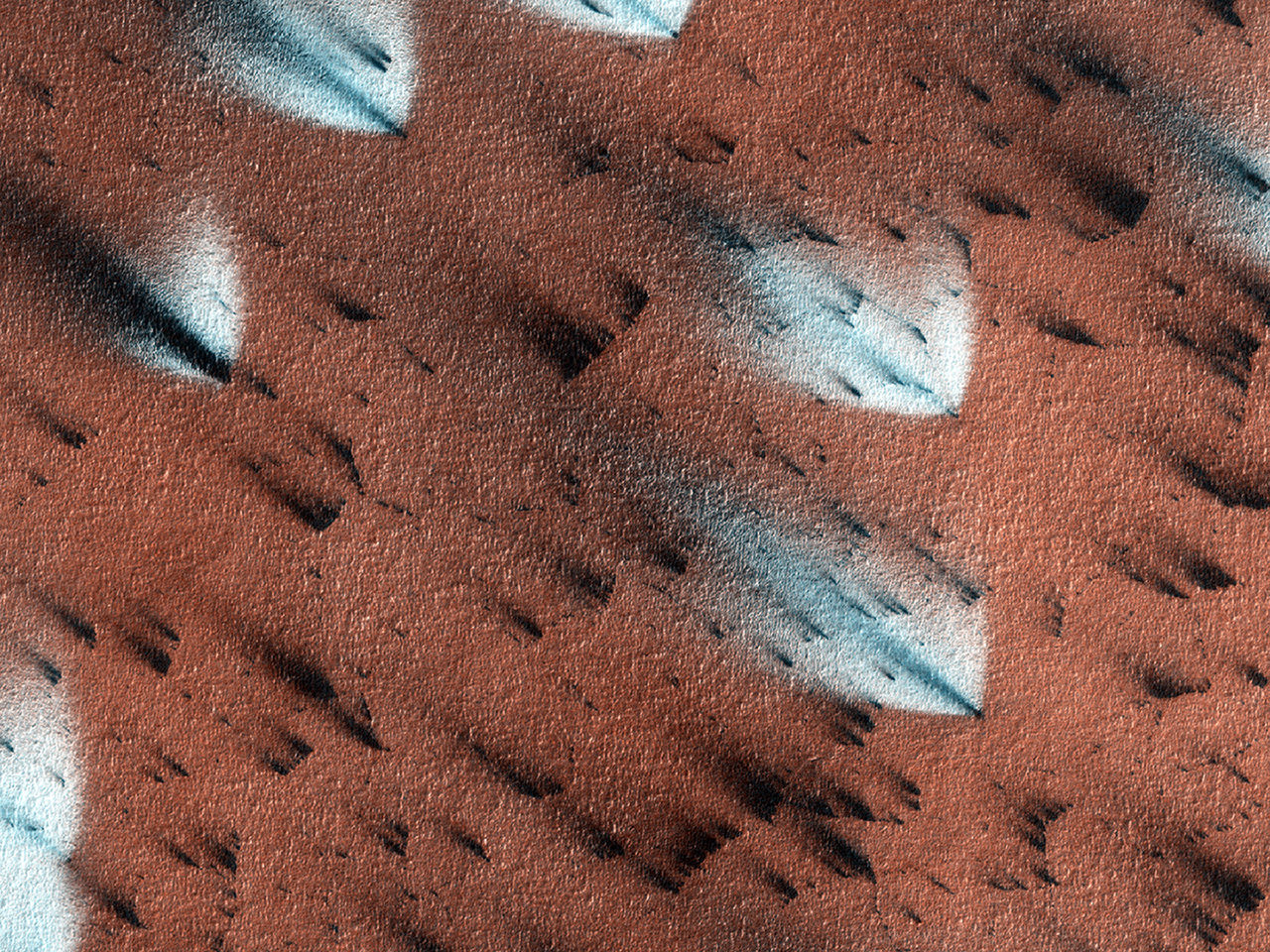Mars may not be tectonically active but that doesn’t mean there’s nothing happening on the Red Planet’s surface. This video from NASA’s Jet Propulsion Laboratory shows the dramatic seasonal changes that take place in Mars’ polar regions when the frozen carbon dioxide — called “dry ice” — coating the basalt sand dunes begins to thaw and cracks, releasing jets of sublimating CO2 gas that carry dark material upwards and outwards, staining the frozen surface of the dunes. Imagine what it would be like to be standing nearby when these jets erupt!
This process occurs around the upper latitudes of Mars every spring and is responsible for the dark (and sometimes light) mottled discolorations observed across sandy and dune-covered terrain.
Bright fans are created when surface conditions cause escaping CO2 gas to condense back onto the surface. (NASA/JPL/University of Arizona)
If a prevailing wind happens to be blowing when the gases are escaping the cracks in the ice, whatever material they are carrying will be spread by the wind across the dunes in long streaks and fans. Read more about this process here.
“It’s an amazingly dynamic process. We had this old paradigm that all the action on Mars was billions of years ago. Thanks to the ability to monitor changes with the Mars Reconnaissance Orbiter, one of the new paradigms is that Mars has many active processes today.”
– Candice Hansen, Planetary Science Institute
The images in the video were acquired by the HiRISE camera aboard the Mars Reconnaissance Orbiter, which has been orbiting and observing Mars in unprecedented detail for over six years. See more HiRISE images of the Martian surface here.
Video: NASA/JPL


